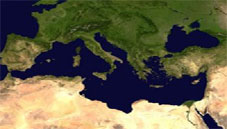| ID: I12 |
Title: ATHENAION, Paestum, Italy. |
|
| Period of construction: 510-500 A.C |
| Structural type: Block structure |
Chronology of intervention:
-1805 -1828: “External” consolidation measures by architect Antonio Bonucci;
-1907: Campaign of excavations around the Paestum’s temples by Vittorio Spinazzola;
-Beginning of ‘60: Intervention of conservation,
-1921-1922: Archaeological excavations by Vittorio Spinazzola;
-1928-1939: Archaeological excavations by Amedeo Maturi of a local institute.
-1994: A. Giovannucci; government delegate to the monument prevention copra and scientific support of I.C.R. of Rome.
|
Type of interventions:
-1800: The use of visible external consolidations (reinforcement rings, stirrups) guarantees a high rate of reversibility and reduces the loss of “historical material” caused by perforation in interventions more invasive.
-1960:
Structural consolidation and solution of deterioration problems.
-1994:
Interventions to slow down the degradation of the materials; to do this, a mortar stucco was used consistent with the original materials.
Description of the interventions:
-1805:
Excavation opened “Felice Nicolas” of Real Museum.
-1805-1828:
The Bonucci’s reversible interventions showed their validity for:
-measure –choice of used material– respect to original structural conception – possible reversibility
-1907:
The ancient road along the urban sanctuary is re-established.
-1921-1922:
Excavations for over 65000 m3 of soil
-1928-1939:
Extensive excavations to the walls, the doors and around the temple.
-1960:
Irreversible interventions:
-The static scheme was modified- colonnade and architraves were transformed in a frame by pivoting with steel rods to improve the structural behaviour.
1994:
Restoration of two columns of the south side and one of the east side (A. Giovannucci) –subsequent interventions for the restoration of the whole building (R. Martines)
- Stucco work to stop partly some type of degrade
STUDIES OF THE STATIC OF THE TEMPLE
The continuity of the surfaces of support was almost completely interrupted because of the loss of material integrity and the subsequent round off of the corners; even if the building was able to resist to the stress of certain seismic action (as demonstrated by structural analysis), it was necessary to recover the right contact between the surfaces, to have a “static improvement”.
|


|
|




